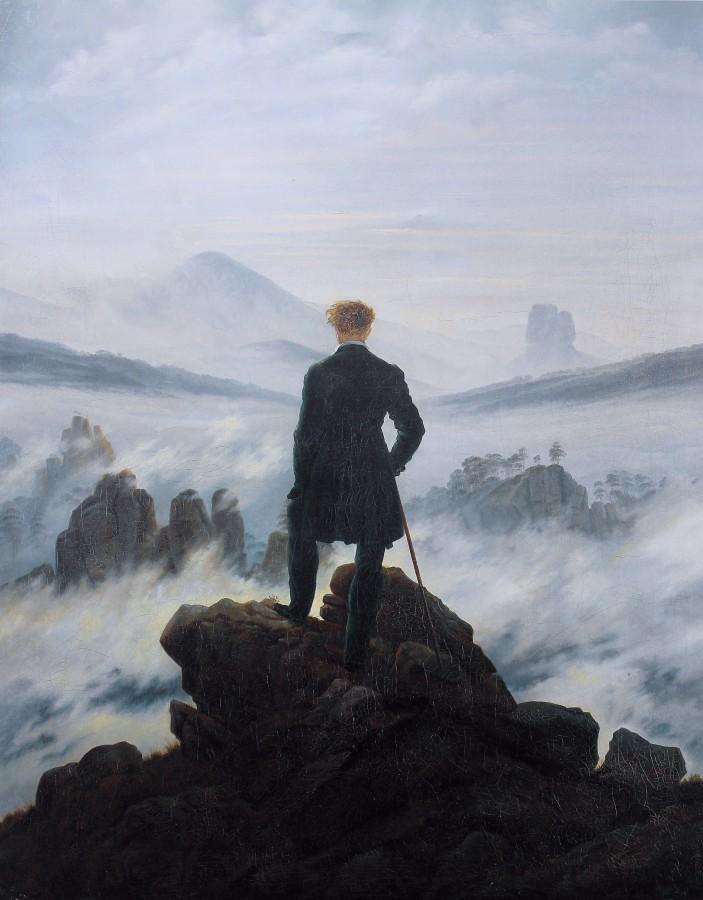Art History: Wanderer above the Sea of Fog
This is the beginning of a series that I will be writing wherein I discuss notable works of art from the recent and not-so-recent past and their various merits. I have developed an increasing interest in art through the years, and while all my creative talent is strictly confined to the written word, the artistic creations of others fascinate me.
The appeal of studying art for me is being able to discern the deeper meanings behind the pieces that are often lost. Symbology and shared culture can change so completely between time periods and places as to make the intended meanings of many works of art unintelligible; discovering the implications can add a whole new layer to the visual appearance of art.
Though much may change, a lot stays the same, and some works of art have continued to speak to people for generations. Examining the influence of history and artistic style on how art is perceived is illuminating, and as someone who was originally frustrated with its seeming inaccessibility, I’d like to make it less opaque.
The first piece I’d like to examine is one of my personal favorites, “Wanderer above the Sea of Fog”, by Caspar David Friedrich, 1818. The Romantic Movement was sweeping through Europe in the 19th century, and this painting is a classic example of the style of art that was en vogue. Its dark composition, haunting landscape, and lone figure combine to create an air of mystery that draws the viewer in.
The mountains in the background have distinctive features of the Elbe Sandstone Mountains, part of Friedrich’s German homeland. Nature plays a powerful role in this piece: the moor stretches as far as the eye can see and appears as a vast ocean, waves breaking on the rocks in the foreground. The effect creates a painting that can be stared into at length, and the faint mountains in the distance cause you to wonder what would be revealed in the mist were the wanderer to venture further inwards. It serves as a reminder of the immensity of nature compared to humanity, small against the looming forest.
As he is, the lone wanderer appears as if he is contemplating what lies ahead of him, in more ways than one. The painting can be seen as a profound psychological portrait, the stranger’s gaze into the murky distance mirroring the trepidation of confronting a future that is still shrouded in uncertainty. The redheaded man has been speculated to be a soldier, but regardless of his intended personage, his anonymity leads him to represents us all.
I’ve found this painting to be very compelling (I even have it on a T-shirt) and I doubt I’m unique in this. Its solemn beauty lends itself to examination, though we all see different things in the fog of time.

